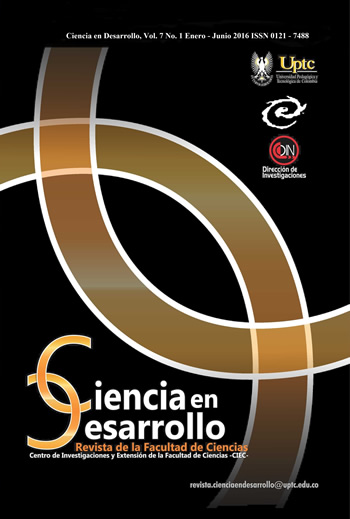Study of Magnetic Shielding in Conductors Materials as a Function of the Frequency.

Abstract
This study describes the effect of a uniform magnetic field in conductive materials, and how they shield
the magnetic field that travel through them. In order to create such a field, two coilis are energized by a sinusoidal signal produced by a signal generator with a difference of potential of 10 [Vp]. The magnetic field measurement is performed indirectly by placing a coil as a sensor in the center of a larger diameter coil, performing the tension difference of potential measurement on the sensor,in such way that by placing a shielding material that encloses the coil and its sensor, the magnetic field inside is reduced, therefore also diminishes the induced tension in the coil. The shielding materials used were steel, aluminum, iron and copper, the efficiency of these materials was studied in a frequency range from 60 to 100.000 Hz, resulting that iron is more efficient than the others from 60 to 12.000 Hz, and for 32.000-100.000 Hz the best shielding material, was copper.
Keywords
Apantallamiento magnético, campo magnético, eficiencia, tensión, frecuencia. (Efficiency, Frequency, Magnetic Shielding, Magnetic Field, Voltage.)
References
- C. F. Barbosa, and F.E. Nallin, “Protection of Telecommunication Equipment from Nearby Lightning Magnetic Field”, International Symposium on Lightning Protection, vol. 11, no. 7, pp. 58-61, Brazil, October 3-7, 2011. DOI: https://doi.org/10.1109/SIPDA.2011.6088418
- J. M. Oliveras, “Blindaje magnético de estaciones transformadoras”, Escuela Politécnica de Cartagena. Octubre, 2010, Disponible en: http://www.tecnicaindustrial.es/TIAdmin/ Números/ 74/408/a408.pdf
- S. Ren, H. Ding, M. Li, and S. She, “Magnetic Shielding Effectiveness for Comparators”, IEEE Transactions on Instrumentation and Measurement, vol. 44, no. 2, pp. 422-424, Abril 1995. DOI: https://doi.org/10.1109/19.377869
- H. Saadi, and R. Oussaid, “Materials Effect On Shielding Effectiveness”, IEEE International Conference on Signal Processing and Communications (ICSPC 2007), pp. 992-1002, Dubai, United Arab Emirates, November 2007. DOI: https://doi.org/10.1109/ICSPC.2007.4728490
- A. Sánchez, “Estudio de materiales metálicos usados como apantallamiento de campos magnéticos”, Tesis de Maestría, Fac de Ingeniería, Dep. Ingeniería Eléctrica y Electrónica, Universidad Nacional de Colombia, sede Bogotá, Colombia, 2010.
- P. Clayton, “Shielding”, Introduction to electromagnetic compatibility, 2nd Edition. J. Wiley and Sons, New York, pp 713-742, 2006. DOI: https://doi.org/10.1002/0471758159.ch10
- H. Ott, “Shielding”, Electromagnetic Compatibility Engineering, 2nd Edition, J. Wiley and Sons, New York, pp. 238-265, 2009. DOI: https://doi.org/10.1002/9780470508510.ch6
- R. Oussaid, “The electromagnetic shielding depending on material?s parameters”, Instrumentation Laboratory, F E I Houar Boumediène, University OF Sciences and Technology, Algiers, Algeria, 2010.
- R.W. Evans„ “Design Guidelines for Shielding Effectiveness, Current Carrying Capability, and the Enhancementof Conductivity of Composite Materials”, NASA, Alabama, Marshall Space Fight Center, Agosto, 1997, pp. 19-36.
- A. Charles, and S.Matthew, “Respuestas en frecuencia”, Fundamentos de circuitos eléctricos, 2nd Edition, Editorial McGraw-Hill, México, pp. 637-642, 2006.
- X. Liu, C. Gao, X. N. Chen, H. Wu, L. H. Shi, and B. H. Zhou, “Portable Measuring Equipment for Extremely Low Frequency Magnetic Field Shielding Effectiveness”, Lab of Electromagnetics, Nanjing Engineering Institute, no. 1 Haifuxiang, Nanjing, China, pp. 978-981, 2008.
- A. Keshtkar, A. Maghoul, and A. Kalantarnia, “Magnetic Shield Effectiveness in Low Frequency”, International Journal of Computer and Electrical Engineering, vol. 3, No. 4, pp. 507-513, August 2011. DOI: https://doi.org/10.7763/IJCEE.2011.V3.370
- J. Cuntala, “Simulation Of Electromagnetic ShieldingIn Comsol Multiphysics Environment”, Department of mechatronics and electronics, Faculty of Electrical Engineering, University of ?ilin, 2006.
- J. Alarcón, and M. Albaladejo, “Ciclo de Histéresis”, Licenciatura en Física, Universidad de Murcia, Junio 2004. Disponible en: http://www.fisimur.org/wpcontent/ uploads/histeresis-articulo.pdf.
- X. Di, “Magnetic shielding using electrical steel panels at extremely low frequencies”, Tesis Doctoral,Wolfson Centre for Magnetics, School of Engineering, Cardiff University, United Kingdom, 2008.
- M. Kühn, W. John, and R.Weigel, “Validation of a measurement method for magnetic shielding effectiveness of a wire mesh enclosure with comparison to an analytical model”, Adv. Radio Science, Vol 11, pp. 189?195, 2013, Disponible en: http://www.adv-radiosci. net/11/189/2013/ars-11-189-2013.pdf. DOI: https://doi.org/10.5194/ars-11-189-2013
- P. L. Arnera, M. B. Barbieri, D. A. Esteban, N. A. Casco, and J. E. Conti, “Efectividad del blindaje de campo magnético de baja frecuencia, con placas metálicas”, Congreso Internacional de Distribución Eléctrica, Instituto de Investigaciones Tecnológicas para Redes y Equipos Eléctricos (IITREE). Facultad de Ingeniería-Universidad Nacional de La Plata, Argentina, 2006.
- Z. Yichao, G. Cheng, S. Lihua, and Z. Bihua, “Analysis and Test of EM Shielding for Low-Frequency Magnetic Field”, Engineering Institute of Engineering Corps, PLA University of Science and Technology, Nanjing, China, pp. 345-349 2007. DOI: https://doi.org/10.1109/ELMAGC.2007.4413501
- S. J. Ferrara, and H. D. Reisin,“Estudio del blindaje magnético y de las corrientes de Foucault”, Facultad de Ciencias Exactas y Naturales, Universidad de Buenos Aires, Buenos Aires, Argentina, pp. 1-13, 2004.
- A. Frikha, M. Bensetti, F. Duval, F. Lafon, and L. Pichon, “Modeling of the Shielding Effectiveness of Enclosures in Near”, Université Pierre et Marie Curie, pp. 612-615, 2003.